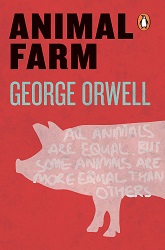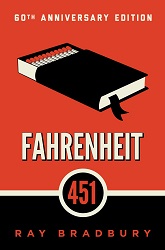History of Book Banning
Would you believe me if I told you that book banning existed even before the Common Era? Book banning has existed in some form or another since the dawn of mankind.
Since at least 213 BCE, book and author burnings have occurred throughout history. One example we could give is American Catholic priests burning Aztecs and Mayan manuscripts 1560’s.
The first banishment in the United States is 1852’s Harriet Beecher Stowe’s Uncle Tom’s Cabin for its pro-abolitionist views and arousing debates on slavery. Along with that, several romantic, science, astronomy-related books were banned by the church.
In 1873, with the prohibition on the mailing of pornographic materials, all anatomy textbooks, doctor’s pamphlets, and books like The Canterbury Tales, The Picture of Dorian Gray were banned for sexual content. The Picture of Dorian Gray by Oscar Wilde is one of the first novels to explore homoerotic and homosexual desire. Ulysses by the Irish writer James Joyce is another book labeled obscene for sexual content and was effectively banned in the United States in 1920.
Later around the 1930s, The Nazi book burnings started as a campaign for removing all Jewish author’s books and communist books by Albert Einstein, Helen Keller, Sigmund Freud, Karl Marks for political and religious reasons.
Who bans the books today and Why?
Today’s methods of banning are very much humane and righteous. According to the American Library Association, book banning occurs when a town, country, library, or school removes a particular book from its shelves. However, these books will continue to be available to the public, either online or in stores. Another branch of banned books is called ‘Challenged books,’ which are considered unsuitable by a particular group of people but never completely removed from shelves.
There are three main reasons why a book could be banned: Morality, Religion, Politics. Sometimes, these reasons are not justified, and considering how great most of these books have become.
As this week we are celebrating ‘the Banned Books Week,’ here are my favorite picks for the banned/challenged category.
1. The Harry Potter series
Author: J.K. Rowling
Reason for the ban: The imagery of cults and witchcraft, death, hate, lack of respect, satanic descriptions, and educational value.
My Ratings: ⭐⭐⭐⭐⭐/5

The Harry Potter series is my forever favorite book series. The reason why I got into hardcore reading is thanks to J.K. Rowling. Even though the series was banned for absurd reasons like lack of respect and educational values, these books have taught many readers values of friendship, love, humility, and integrity–ironically, the values I never learned from school or college.
2. To Kill a Mockingbird
Author: Harper Lee
Reason for the ban: Racism and sexual content
My Ratings: ⭐⭐⭐⭐⭐/5

Harper Lee’s classic To Kill A Mockingbird was one of the best audiobooks I read this year. This coming-of-age story delves with racism in small towns, rape, and child abuse, and the importance of standing up to what is correct. Again the absurdity of banning it for the racism of sexual content is because the story provides awareness not encouragement.
3. Animal Farm
Author: George Orwell
Reasons for the ban: Social and political themes and imagery against Islamic values
My Ratings: ⭐⭐⭐⭐⭐/5

Animal Farm is one of the most famous banned books in history. It is a short read you can probably finish within a couple of hours. The whole story and its characters are an allegory of the Russian Revolution and its aftermath. As a person who hoped that animals could talk and think like humans, this was quite a challenging book for me. The UAE banned the book in schools as its imagery of pigs acting like humans is against the religious values of Islam.
4. Fahrenheit 451
Author: Ray Bradbury
Reasons for the ban: Profanity and using God’s name in vain
My Ratings: ⭐⭐⭐⭐/5

Talking about banned books or book burning, you cannot miss out on this one. Fahrenheit 451 is the epitome of banned books within a story. Fahrenheit 451 is the temperature the paper burns. Books are banned in Bradbury’s dystopian world and firefighters in the story burn books and personal collections. Any intellectual activity is considered unlawful by the government, and academics, writers, and artists are branded as state adversaries.
5. The Diary of a Young Girl
Author: Anne Frank
Reasons for the ban: Banned from schools after parents complained of sexual themes, including sexual content and homosexual themes
My Ratings: ⭐⭐⭐⭐/5

Even though the events in the diary are mainly focused on Nazi invasions and the Frank family’s time in hiding during World War II, the majority of the allegations revolve around parents thinking Anne’s entries about her growing body were pornographic, while others felt the phrases indicated homosexual inclinations. Despite having a sister and a mother she also does not have a good relationship with them to discuss the changes in her body. Therefore, she turns to her diary instead.
Related posts
Archives
- May 2024 (1)
- June 2023 (1)
- May 2023 (3)
- January 2023 (1)
- December 2022 (1)
- July 2022 (1)
- June 2022 (7)
- May 2022 (1)
- April 2022 (1)
- March 2022 (2)
- February 2022 (2)
- December 2021 (1)
- October 2021 (2)
- September 2021 (11)
- August 2021 (25)

